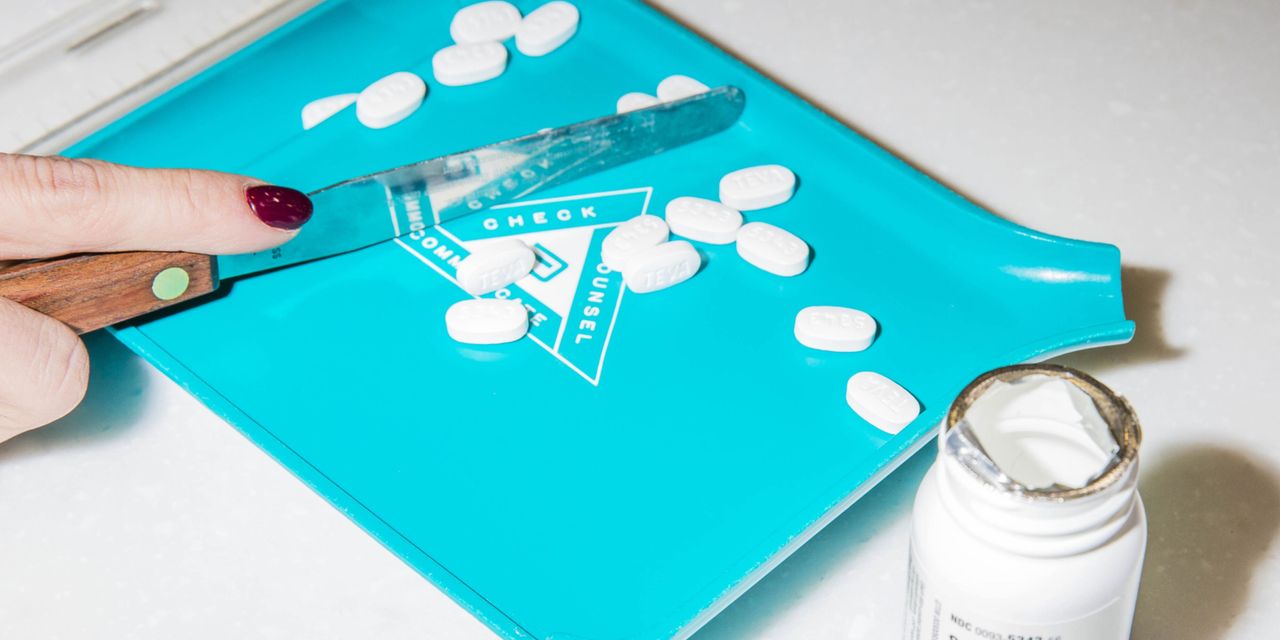Teva Pharmaceutical Industries,
one of the world’s largest generic drugmakers, said Thursday it will cut back on its core generic drugs business while focusing on its pipeline of new treatments.
The new corporate strategy, Teva said, aims to deliver a “pivot to growth.” Teva (ticker: TEVA) earnings have dropped steadily over the past decade, to $2.52 per share in 2022 from $5.35 per share in 2013. The company’s American depositary receipt is down more than 85% from its high watermark in mid-2015, and as of Wednesday, had fallen nearly 30% from a 2023 high.
Teva’s ADR was up 2% to $8.30 in Thursday afternoon trading, after gaining as much as 7.75% earlier in the session.
The drugmaker has been struggling since a series of ill-advised acquisitions a decade ago, notably the decision to buy Actavis Generics for $40.5 billion in 2016.
Debts from the deal crippled the business, and Actavis’s sales of generic opioids in the U.S. made Teva a major target of lawsuits brought by states and local governments over the opioid crisis. Teva is currently finalizing a $4.3 billion settlement of its opioid liabilities. The company has admitted no wrongdoing.
Now, under a new CEO, Teva is looking to turn the page with a new strategy that emphasizes the company’s pipeline of novel therapeutics—and aims to slim down its core generics portfolio to improve that segment’s profit margins. While the pharmaceutical’s generic drugs provide important, inexpensive alternatives to high-price branded medicines, margins in that business can be very thin.
A New York Times report on Wednesday highlighted generic drug shortages, which the report stated are at near-record levels, and have caused the White House and the U.S. Congress to turn their attention to the generic drug market.
In an interview with Barron’s on Thursday afternoon, CEO Richard Francis said any discontinuations of generic products will be done in a way that won’t cause shortages. He suggested that a smaller portfolio of generic drugs would be more resilient to shortages.
“We’d like to think that a manufacturing network, which is designed and set up in a way to sell and manufacture the molecules we really are committed to allows us to create more capacity and flexibility in our supply chain,” Francis said.
At a news conference Thursday morning, Francis had said Teva’s pullback from some generic drugs won’t affect the generic drug supply.
“The reason why these products are low-margin is because there are many manufacturers who are supplying these medicines,” Francis said. “I think when we step out of these markets, we’ll be replaced very quickly by the many other manufacturers who are delivering and supplying these products.”
The company’s generic drug pipeline instead will focus on “high value products,” Francis said, and Teva will now focus its generics research and development on 60% of products that lose patent protections, down from 80%. The company will work mainly on complex generics—specifically drug device combinations and long-acting injectables.
“As we look across our portfolio, there are some molecules which are supplied by many manufacturers,” Francis said. “Because of that, it’s very much a low-margin business; there’s an oversupply of those products. And because of that, we’re going to remove those from our supply chain. And that takes time. That’s something that we’ll have to do over a number of years.”
The company said it plans to reduce its generics manufacturing footprint to between 40 and 44 sites, from 52 sites currently. While Teva currently spends about 40% of its R&D budget on generics, it plans to spend only 10% to 20% of its R&D budget on generics by 2027, as it reallocates to its innovative medicines R&D.
In addition to changing its generic offerings, Teva said it plans to focus on the branded, nongeneric drugs it currently sells—including Uzedy, a newly-approved treatment for schizophrenia. It also plans to expand its pipeline of new drugs, with a focus on neuroscience and cancer.
While the company said it is “committed to continue serving its debt,” it will also allocate resources to “fund growth.” The company had $18.5 billion in debt in the first quarter of this year, or 4.25 times Ebitda, or earnings before interest, taxes, depreciation, and amortization. It says it aims to have net debt of 2 times Ebitda by 2027.
“We clearly know where we have to focus our capital and our attention,” Francis said. “And if we do that, and we’re successful, I believe we’ll grow our business in the short, medium and long term, top and bottom line.”
Write to Josh Nathan-Kazis at [email protected]
Read the full article here













